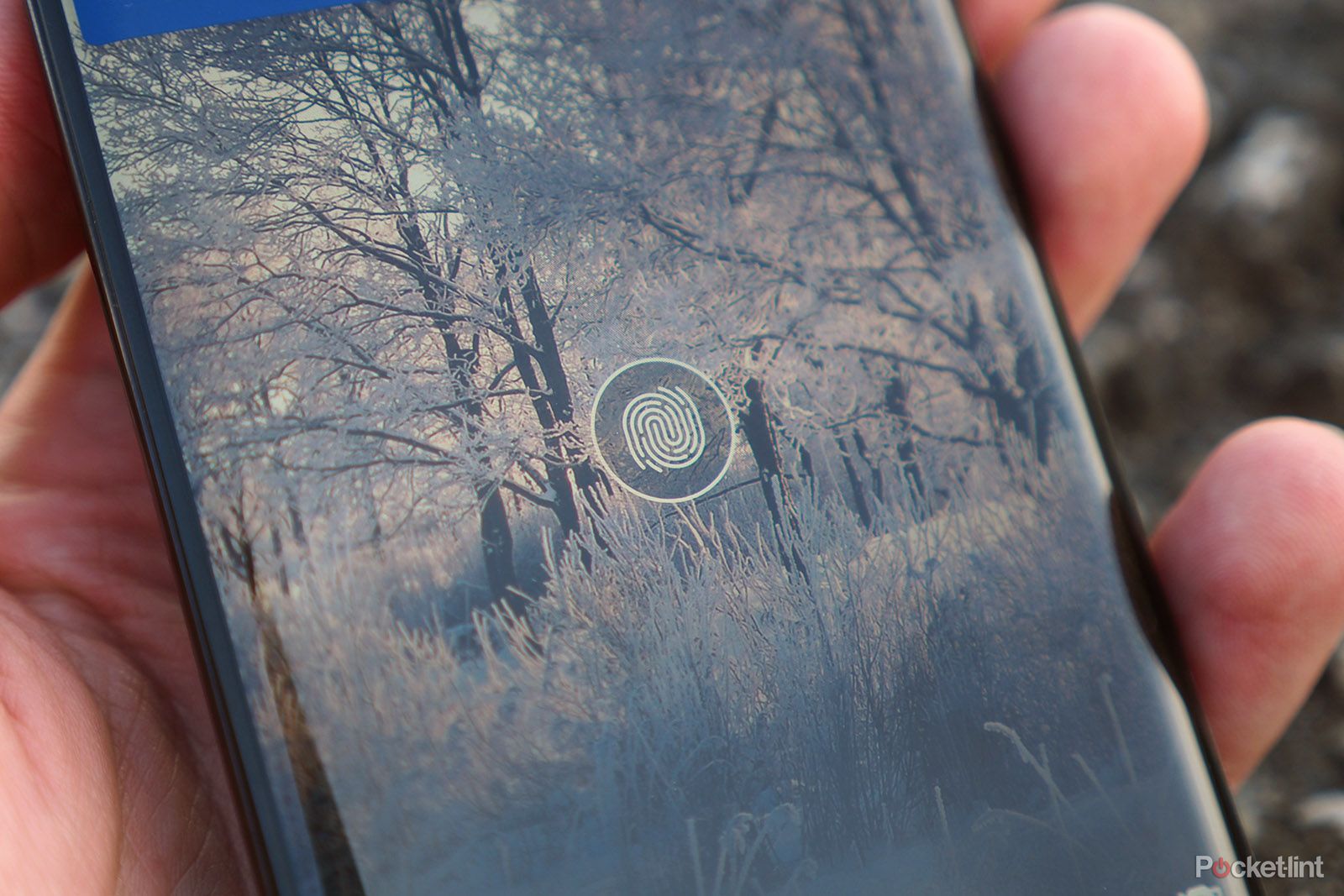The Huawei partnership with Porsche Design has yielded some interesting results. And the 2018 collaborative smartphone from the two brands carries a rather long and prestigious name - Porsche Design Huawei Mate RS, no less - to play on Porsche's prominent motoring heritage. That's RS for Racing Sport, if you're wondering.
The Mate RS is positioned as luxury phone. It's a device choc-full of feature firsts and future-facing ideas that excite: from its under-the-display fingerprint scanner, to its space suit-inspired cooling mechanism. It even delivers features not in Huawei's new flagship P-series devices, such as wireless charging.
The Mate RS is clearly a phone gunning for pole position. But with a hefty £1,679 asking price to go with that iconic Porsche Design branding - yes, it's a sixteen hundred pound phone! - are its aspirations greater than its realisations?
We've been living with the phone for a couple of weeks as our day-to-day device and have found it to be a mix of best-in-class and imperfect future-gazing ideas that don't quite make the cut. Here's the long and short of it...
Our quick take
The Porsche Design Huawei Mate RS arrives at a time when few-to-no designer phone brands in existence - Vertu has fallen by the wayside (sad face) - and its genuine focus on design and technology innovation (that doesn't depend on 24 carat gold or 150,000 Swarkovski crystals gimmicks) means there's a lot to impress.
That said, from our two-week experience living with the device, we feel the Porsche Design sometimes has its head in the clouds. The under-the-screen fingerprint scanner, for example, sounds technologically incredible - but it doesn't work that well at present, and it duplicates a feature also found on the rear on the phone (which is all too often blocked by the included flip cover). The screen might have all the resolution, too, but the curved edges don't produce the cleanest or brightest image from all angles, while for the battery to deliver its true worth you'll have to downgrade that resolution via the software.
Then there's the inevitable high price point. Yes, the Mate RS is expensive. It's meant to be. It's a designer brand making a designer phone. But it's a phone that's more advanced than any current Huawei handset, thanks to some advanced and inevitably expensive tech (space suit-like cooling anyone?). If you couldn't give a hoot about a design brand then this phone was never meant for you in the first instance. That's just how these things are: buy a sports car and it might be impractical, but you'll want to show it off all the more for its rarity.
Overall, we love the Porsche Design Huawei Mate RS for its boldness. If this was a track race, this phone would be the odds-on favourite to win. On the day, however, it'd be the one to crash out in an explosive, expensive and memorable collision. Which might well be the most exciting outcome possible, because this phone is a wonderful glimpse of what will be, wrapped into a package that isn't yet truly five-star on its delivery.
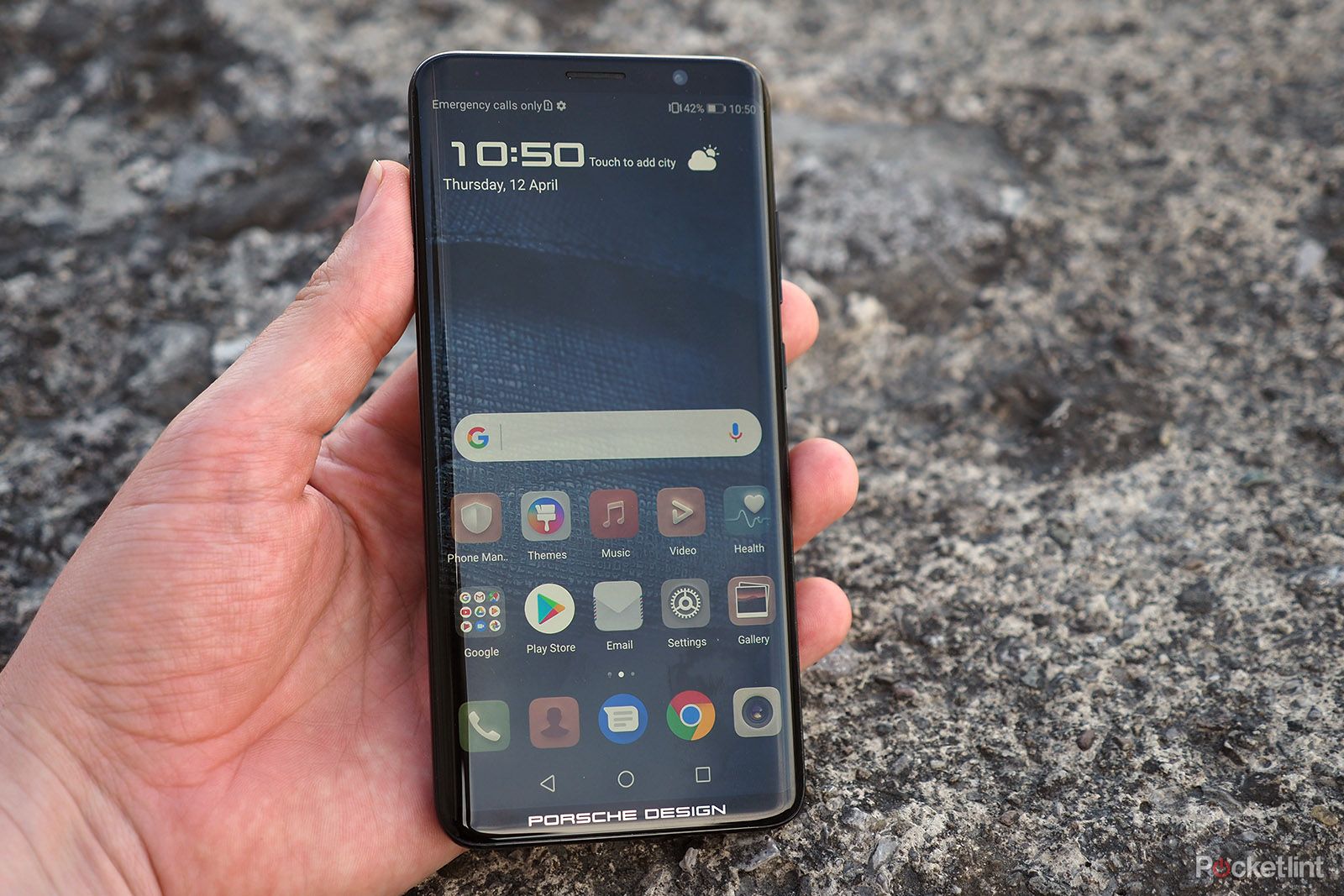
Porsche Design Huawei Mate RS - 4.0 / 5
| FOR | AGAINST |
|---|---|
|
|
Designer wares
- Metal and glass design
- Curved edge display
- IP67 waterproofing
- 152.9 x 72.5 x 8.5mm; 183g
- Included flip case
If the PD Mate RS looks kind-of familiar, that's because we think there's a hint of Samsung Galaxy S9+ about its design thanks to the curved edges front and rear. We said much the same about previous Porsche Design handsets, such as the Porsche Design Mate 9.
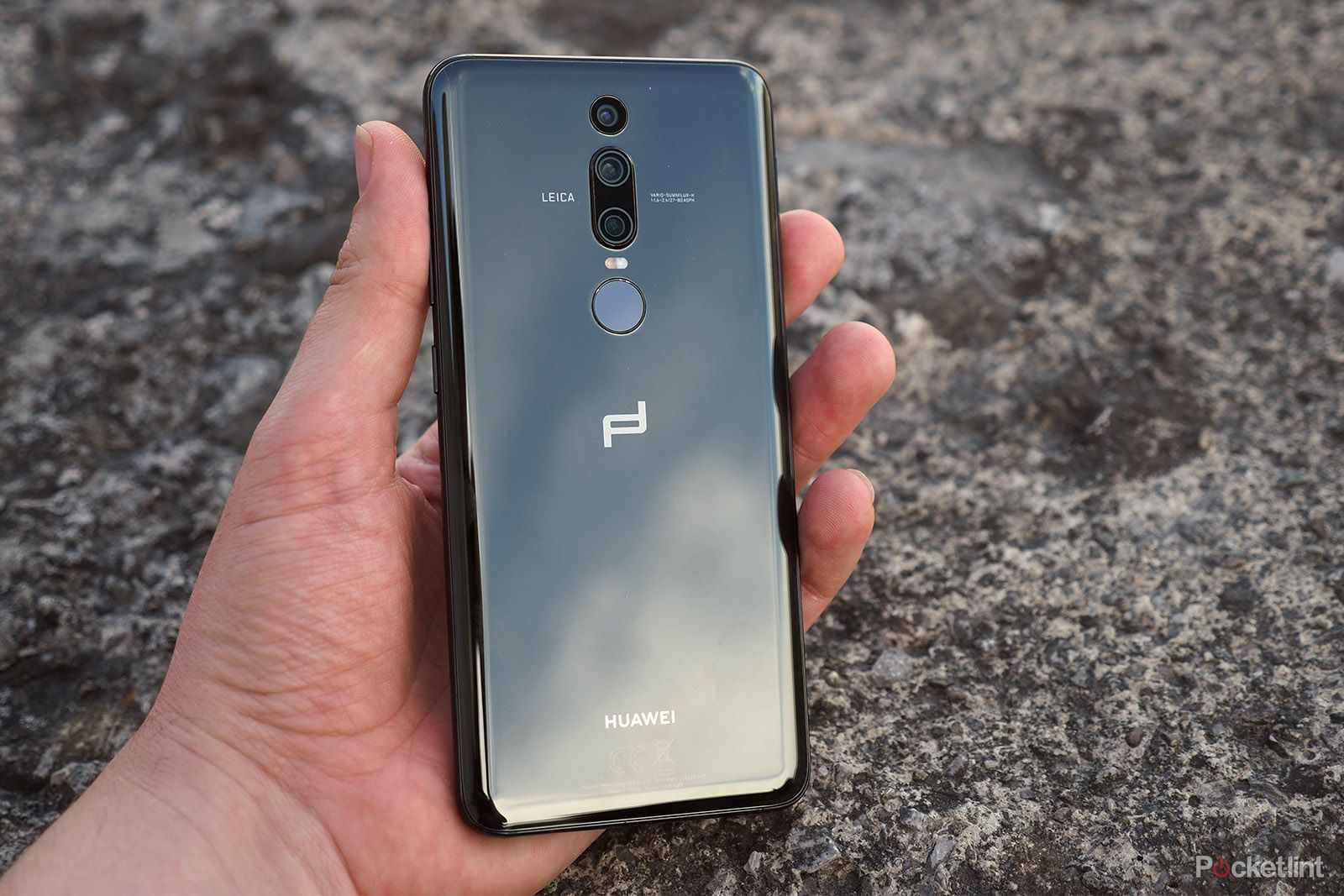
While Huawei's new P20 Pro flagship looks similar to the iPhone X, Porsche Design is taking a different tact with the Mate RS. Being at the pinnacle of design, however, PD has elevated the curved edges in the Mate RS: they're smoother, more refined and rounded than you'll find in any current Samsung phone. They're also more on display than a sharper-edged phone, and therefore at greater risk of scratching.
The RS design feels like a facelift version of the Porsche Design Mate 10, with some extra 'tailpipes' poking out of the rear, courtesy of those triple cameras. The physical design, front-on, isn't dramatically different between those two devices. In some senses we prefer the older device, with its etched-on rear panel.
There's also IP67 waterproofing so if you drop the Mate RS off the side of your yacht than all will be just fine. Just send the divers after it.
Another point of note is the Mate RS' packed-out box. It includes one two-prong European and one three-prong UK plug, with USB-C cables for each, plus a leather Porsche Design Huawei flip cover, and Porsche Design in-ear headphones. There's even a card of authenticity. Fancy.
Dual scanner conundrum
- Rear physical fingerprint scanner
- Front under-the-screen scanner
One thing you'll see on the Mate RS that no other phone offers is dual fingerprint scanners. Yep, the a physical one to the rear is typical of Huawei Mate convention, while an under-the-screen scanner sits on the phone's front. And we really do mean under the display itself, literally towards the middle of the device's screen.
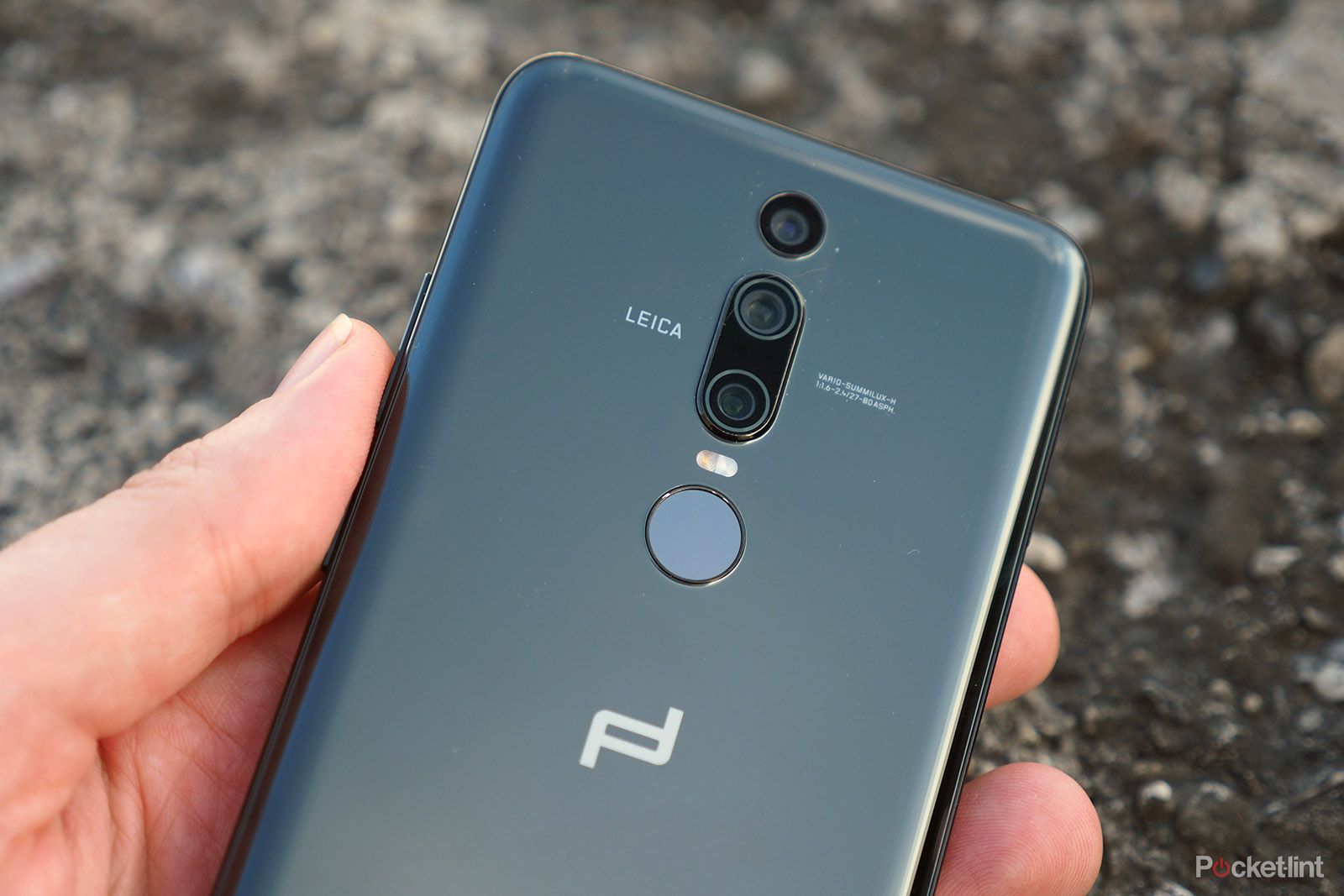
Which is all rather futuristic and exciting. In the same breath it's also confused, as if a final decision couldn't be made. Front or back? Which doesn't feel very Porsche Design in terms of design logic.
The rear scanner is well positioned for quick sign-ins without wiping a stray finger all over the cameras. Problem is, put the flip case on (which you'll want to do to avoid scratching your £1600 phone) and you'll be jostling between the rear flap and the scanner - as no apps can use the in-screen scanner as an unlock/payment option.
The under-the-display scanner is certainly exciting as a prospect. But it's too early an implementation of such technology to work fast enough to match current standards. On the one hand we've come accustomed to using it as our sign-in route, but as mentioned above its non-use for apps makes it only semi-useful, while its fail rate is far higher than the rear scanner.
So on the one hand we love the future-facing boldness of this front scanner, how it alludes the the future tech of smartphones. But, here and now, the technology just isn't up to scratch with what people will expect. Perhaps we should think of it as a precursor to similar inclusion in a future handset - like a Mate 20? - but for a Porsche Design product to include it feels like it's for the sake of getting there first.
High-res display
- 6-inch 18:9 AMOLED display
- WQHD+ (2880 x 1440 pixels, 538ppi)
- Curved glass edges
- No notch
Where the Mate RS again sits a little closer to Samsung and other top-drawer flagships is with its display. With a 6-inch 18:9 aspect ratio AMOLED panel, it's only a touch off the resolution of the Samsung Galaxy S9+, for a supremely resolute panel.
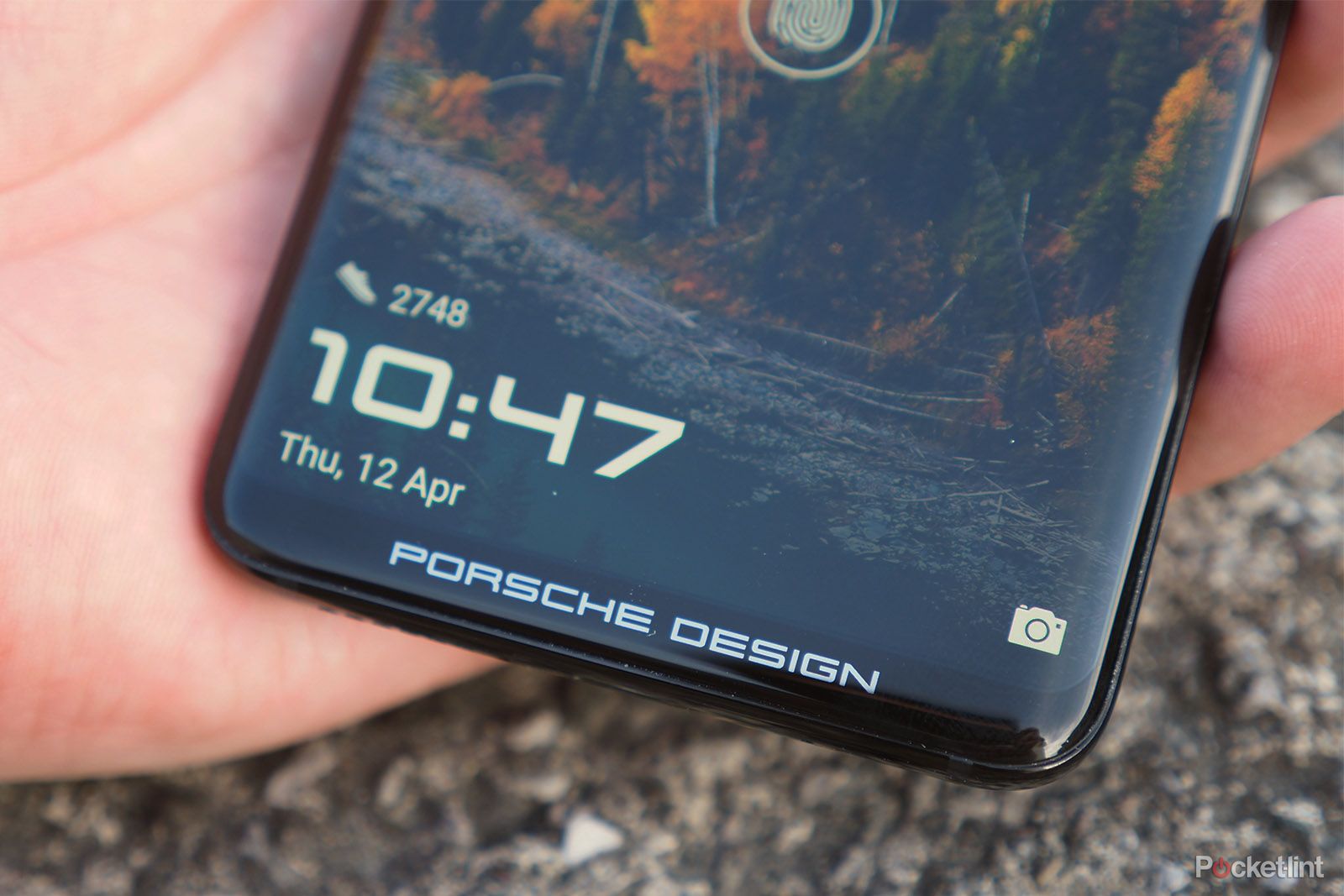
On paper that resolution and OLED panel type sounds like the best-of-the-best, but in reality, again, the Mate RS is over-reaching. And for a number of reasons.
First, those curved edges see contrast fall-off, meaning viewing angles to the edges are limited for a panel of this type, with a purple-ish tinge sometimes visible. Sometimes you'll tap an edge by accident, too, resulting in an unwanted action.
Second, the resolution is a battery hindrance. Having used the panel at full resolution for a working week and wondered why the life per charge was so below par, we adjusted the software to Smart Resolution - which auto-adjusts depending on what you're doing - to see a marked improvement. Having that 2880 x 1440 resolution might sound great, but if it only works against the device then it's simply superfluous.
Third, while the OLED panel can go rather bright, it's typically reluctant to do so. Having wandered sunny streets with phone in hand, we feel that brightness could do with an extra kick for when it's really needed. Switching off Auto within the settings and dragging the brightness bar to maximum certainly brings results, but we've seen brighter and bolder colour displays from other phones.
Where the Mate RS' screen does get it correct is with the lack of a 'notch'. This black-out dip appears on some other flagship devices (iPhone X, Huawei P20 Pro) to maximise screen real-estate and minimise bezel, but it's a feature that splits opinion. In the Porsche Design there's no such conundrum, because there is no notch. Hurrah.
Speaking with the Porsche Design team at the company's design studio in Austria back in April 2018, it became clear that a notch was never even a contemplation for this device: the Mate RS is all about symmetry; its top and bottom bezels are near matching in size, to give it a certain aesthetic appeal. An interesting stance indeed, and one which shows this is ultimately a Porsche Design phone - not just a rebadging exercise.
In summary: the Mate RS does have a good display. There's rich blacks thanks to OLED. There's ample brightness (more so than the Google Pixel XL 2, which we side-by-sided the PD phone against). There's heaps of resolution, too. It's just not overall the best-of-best we've seen due to battery-sapping resolution and curved edges that are there solely for design showiness. And when spending £1600, you'd think it'd be better in every way.
Specs, power and performance
- HiSilicon Kirin 970 processor (4x Cortex A73 2.36GHz & 4x Cortex A53 1.8GHz, i7 co-processor, Mali-G72 MP12 GPU, 6GB RAM)
- Cooling micro capsules, adopted from space suit technology, for the ultimate high-tech cooling
- 256GB storage (512GB option also available), no microSD card slot
- 4,000mAh battery with fast-charging, wireless charging too
On the face of it, the Mate RS has similar innards to the Huawei P20 Pro; there's a Kirin 970 platform with 6GB of RAM, but it gets 256GB of storage at a base level (you can opt for 512GB of storage, but that puts the price up to over £2K... choices, choices).
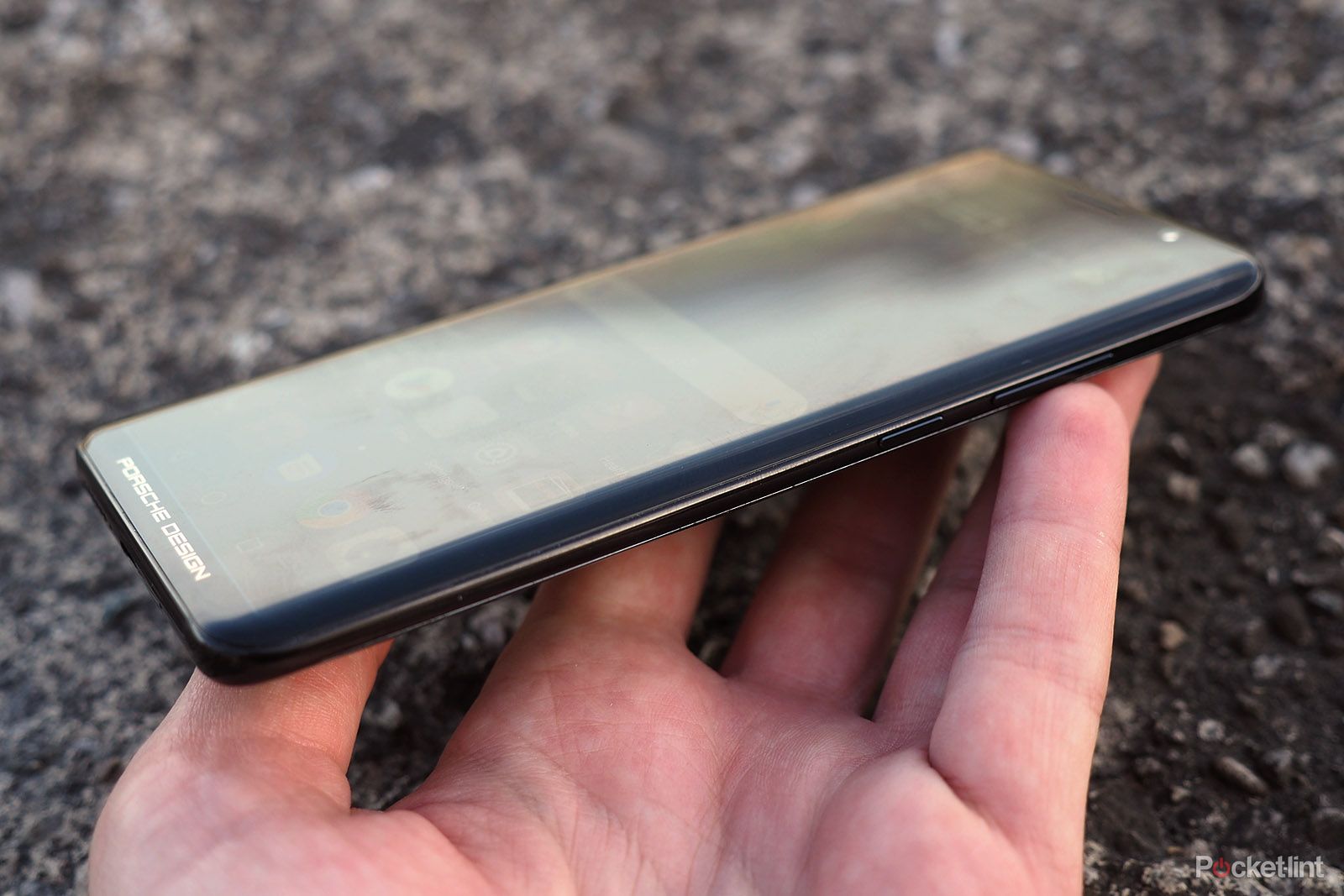
But there's more to the Mate RS than meets the eye. Porsche Design being Porsche Design, the company has gone all-out when it comes to high-end tech, adopting cooling micro capsules - the kind you'd find in an astronaut's space suit, according to a spokesperson - that help to disperse heat from the processor. When these capsules adsorb heat their form changes to aid the dispersing of heat, to cool the device that much quicker.
Thing is, having used the phone for weeks, we don't feel there's any considerable real-world benefit to this system in such a device. With all the power available, the Mate RS doesn't last as long as the Huawei P20 Pro - which might seem illogical, but the added screen resolution and presence of a case, we believe, are two countering factors to its sometimes limited longevity.
That's not to say the battery life is bad, though. With the resolution running full and no battery or processor limitations set, we'd see 12-15 hours per charge under fairly heavy use. Many other phones struggle to manage that - but with a 4,000mAh battery under its hood, the Mate RS should be delivering far more than that. It can, should Smart Resolution be activated, which can elevate usage to the 18-24 hour mark (still, the Huawei P20, which is thinner and smaller, lasts even better).
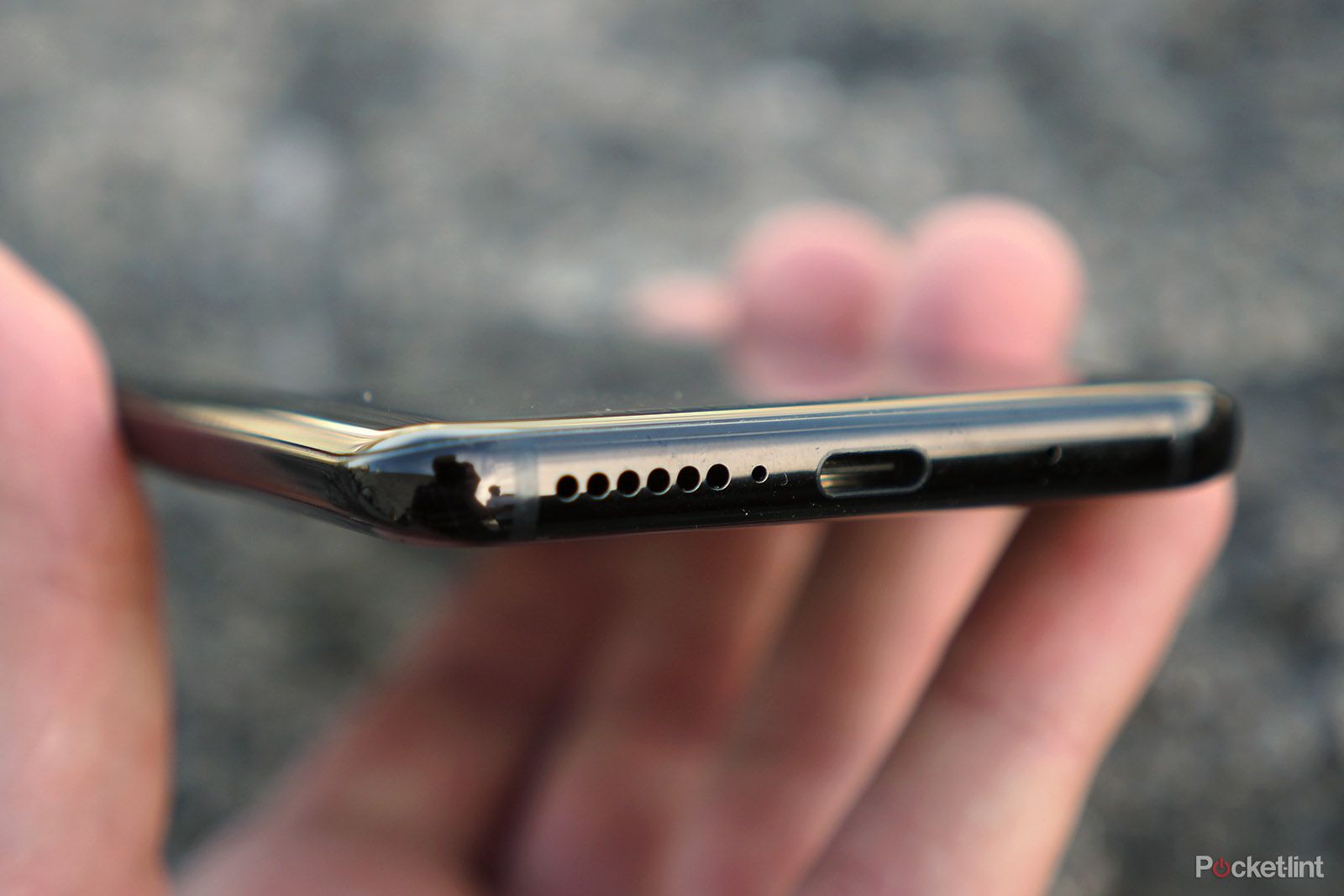
Fortunately there's also fast-charge via USB-C for quick top-ups. And wireless charging is included, although there's no wireless charger in the box (and being such a massive box of goodies, this seems like a big oversight). We tested using a Xiaomi Qi pad and it functioned, although the Mate RS' area of charging sensitivity appears to be rather small, which may result in non-charging if you're not looking when plonking the phone down on a pad.
While there's space-age tech aplenty, there's no microSD card slot or 3.5mm headphone jack. In high-end flagship phones these features seem to be a common absence, so you'll need to use the Type-C USB port for audio as well as charging (unless you opt for wireless charging, of course), although the onboard speakers and connected headphones also support Dolby Atmos for an immersive and loud audio experience that sounds great.
Class-leading cameras
- Same triple Leica camera system setup as the Huawei P20 Pro
- 40MP colour RGB, 1/1.7in size, f/1.8 aperture
- 20MP monochrome, f/1.6 aperture
- 8MP 'telephoto', f/2.4 aperture
- Phase detection and laser autofocus
Having spent a lot of time with the Huawei P20 Pro, we believe its camera arrangement - which is co-engineered with Leica and features colour and monochrome sensors - is the best currently on the market. The Mate RS takes that exact same camera system, flips it upside its head (literally, the lenses and sensors feature in reverse), and plants it slap bang in the upper centre on the phone's rear.
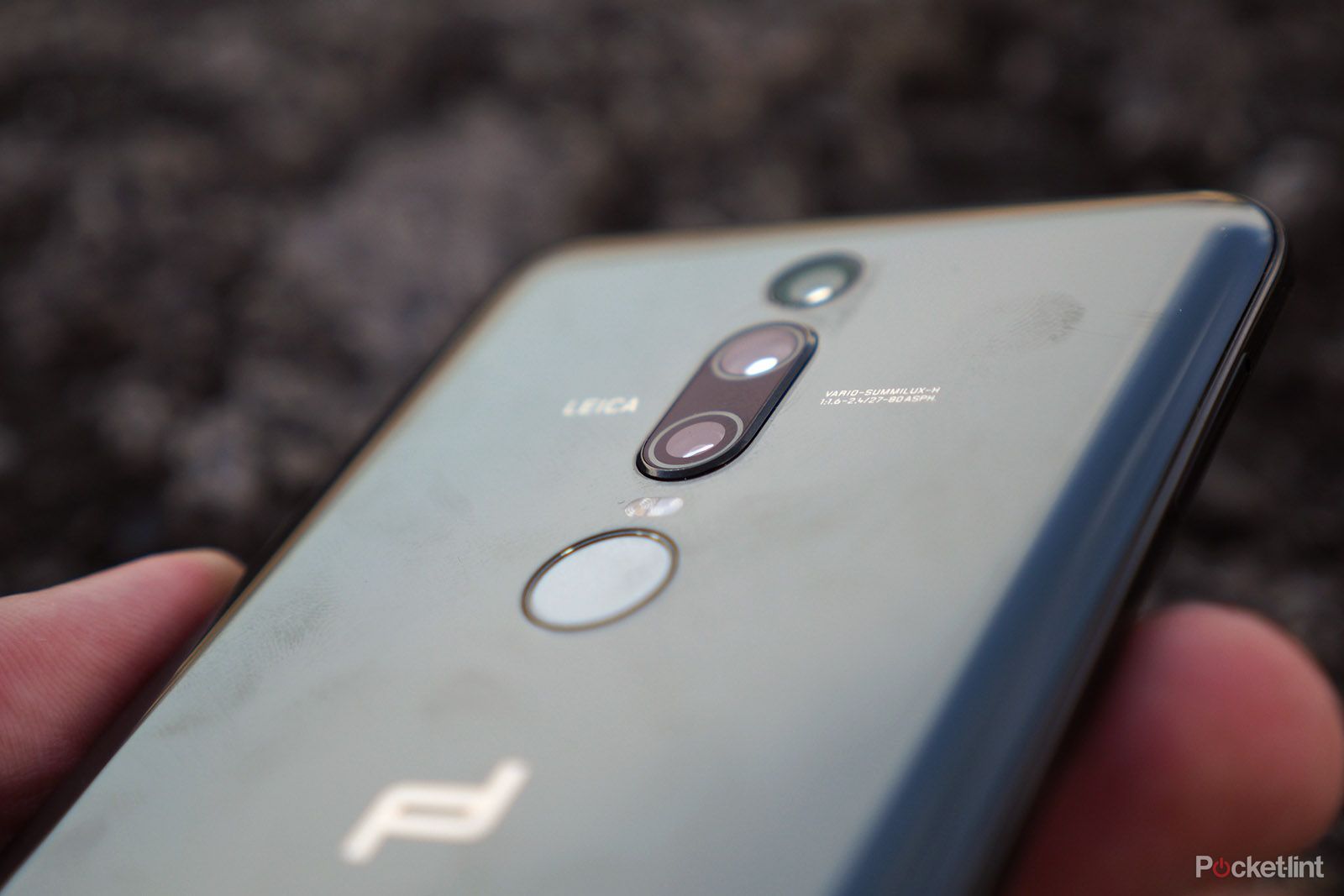
These cameras work in harmony to help capture the best possible image. And, indeed, a lot of the specs will go amiss. Open the PD Mate RS's Camera app and it'll default shoot at 10 megapixels (not the headline 40MP), utilising the colour and monochrome sensors together to benefit the best possible amounts of data for clarity, sharpness and colour. All this happens without you needing to so much as think. And if you want to use the 3x or 5x zoom - which is where the 8MP tele lens comes to the rescue - you'll also get great results from that.
It's in use where the cameras really show their worth though. One thing Huawei is pushing hard is the artificial intelligence (AI) capabilities of its Kirin 970 chipset and its neural processing unit (NPU). The Mate RS, like the P20 Pro, benefits from machine learning: it can pull on a database of nowledge to recognise, say, a portrait from a blue sky shot, or a dog from a person having their portrait taken. When the camera detects these prompts - and all automatically - it'll auto-select the optimum shooting mode (of which there are 19 in total) to make for the best-looking final image.
Well, that's the idea at least. It generally works really well: Night Mode kicks in for handheld night-time shots (check out the handheld New York night shot below for example), which are like unreal HDR shots; Portrait mode kicks in when there's a face, using the software to blur the background for a pro-looking shot; while some scene modes enhance colours and saturation... but sometimes just that bit too much (Greenery, for example, takes green grass and makes it look rather putrid in its over-saturated form).
What's extra clever about this AI tech, however, is that if you don't like something the camera is doing then it will learn. Let's say Greenery kicks in - which displays in words on the screen after a small delay - but you don't want to use it, then simply hitting the "x" to the corner of the auto-selected mode will disengage it. Better still, if this happens a lot for a given mode the device will learn that you don't appreciate the mode and begin to not use it in all given scenarios.
We've said that the P20 Pro has the best current phone-based camera arrangement that you can buy. Well, the Porsche Design Mate RS matches. It's very impressive indeed, whatever the shooting conditions, from low-light to bright light. But you'd hope for nothing less in a £1600 phone, right?
To recap
We love the Porsche Design Huawei Mate RS for its boldness. If this was a track race, this phone would be the odds-on favourite to win. On the day, however, it'd be the one to crash out in an explosive, expensive and memorable collision. Because this phone is a wonderful glimpse of what will be, wrapped into the body of what isn't yet quite there.

